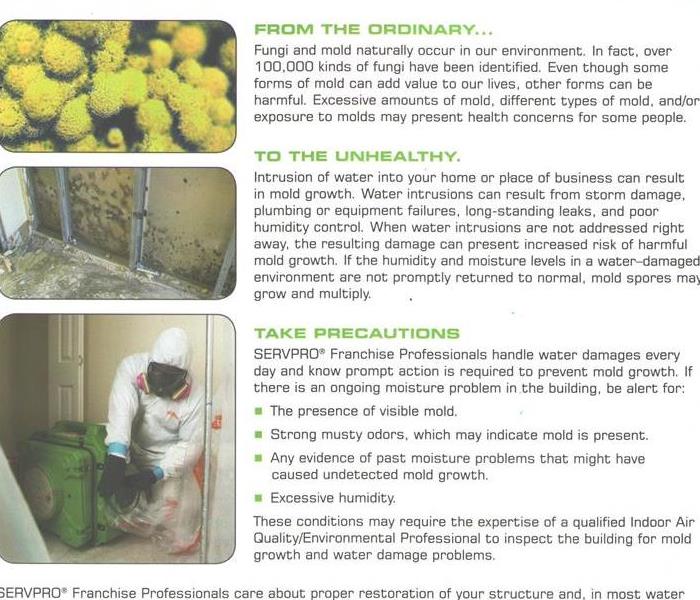Household Mold
6/25/2019 (Permalink)
Aureobasidium is a mold that can sometimes be found growing behind wallpaper or on painted or wooden surfaces. Aureobasidium usually develops in a pink, brown or black color. As it ages, aureobasidium typically turns a darker brown color.
Aureobasidium spores are difficult to identify on spore traps because of morphologic variation. Its most distinguishing feature is the production of primary blastospores (spores produced by a budding process) arising directly from pigmented, vegetative hyphae on short denticles (protuberances in the hyphae). The spores may be hyaline or pigmented, variable in size, one-celled, ellipsoid or ovoid, and completely encased in a slimy coat. These primary spores can give rise to secondary or tertiary spores through yeast-like budding. The conidia (spores) adhere together to form slimy heads. The brown hyphae can differentiate to form chlamydospores (resting spores) or arthroconidia (asexual spores) at maturity.
When to Test?
- When visible mold is not present, but the smell of mold is, a mold inspection and mold test can reveal whether there is indeed elevated mold, and where it is located.






 24/7 Emergency Service
24/7 Emergency Service
